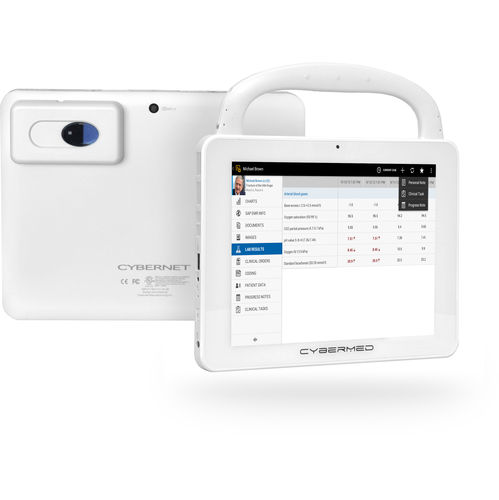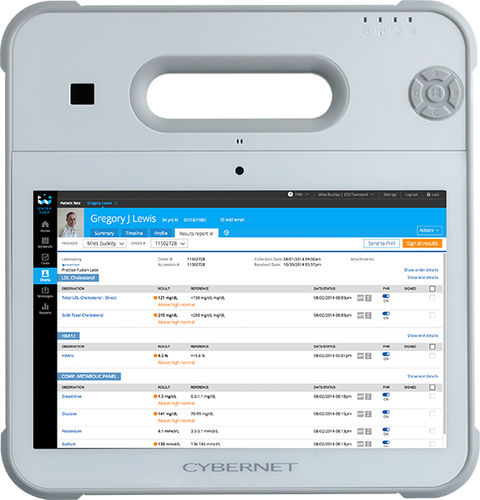
#Industry News
HOW TO CHOOSE THE RIGHT EMR SYSTEM FOR YOUR PRACTICE
Questions you need answered for your EMR needs
Has your healthcare group ever tasked you with submitting recommendations for its electronic medical records (EMR) platform? Today’s post provides some guidance for your research as it covers:
EMR costs and features
Popular EMRs on the market
Details on Epic and why it’s widespread in the industry
How Much Does an EMR System Cost?
Comparing pricing information of EMR systems is a complicated task. So don’t be surprised if you’re quoted prices between $15,000 to $70,000 and up to an eye-watering $500,000 and more. Most software is customizable based on the unique needs of the practice.
Factors that go into this price tag include:
Type of storage chosen. Will it be on the clinic’s premises? Or be cloud-based?
Are there any additional hardware costs? This can range from new arms and mounts for medical computers to additional servers.
Are there additional features for specialists like lab techs as well as radiologists and pharmacists?
Are there additional costs for training?
In response to any of the above questions, many healthcare software companies won’t bring up figures until deep into the negotiations.
Is it a generic system or one custom to your specialty?
Healthcare groups can have a wide range of clinics and hospitals. A dental office will have different requirements than those in a major surgical unit.
This has led to a diverse market in EMR systems. Most, though, break break down into two types:
Outpatient EHR systems are designed for small physician practices and similar, specialized centers like skilled nursing facilities. EHRs used here are often only used within a single department. Because of this, they rarely connect with other systems (i.e., have minimal or non-existent interoperability).
Inpatient EMR systems are designed for use among multiple departments. They have high interoperability with other on-site networks.
Unsurprisingly, they are found in most hospital settings.
What are its features?
Templates for patient information found in virtually all EMR systems include:
Allergy information
Demographic information
Diagnoses
Immunization records
Lab test results
Medication information
Notes
Depending on the medical practice, the EMR may also need:
Integrations with coding and billing software.
Telehealth capabilities.
Care coordination.
If customizable, how easy is it to do so?
Is it easy for the medical staff to configure the EMR system to the group’s needs?
Does healthcare IT (HIT) need to be brought in and trained? Or can the software be only updated by the company’s engineers?
The more difficult it is to make the software work for HIT, the more costly in time and money it is to the group. Thus, the above questions are vital to answer.
Just how easy is it to use the EMR software?
Is the system easy to figure out and use? Or will extensive training be necessary for even the most basic of functions?
Providers, nurses, and medical staff rarely have the luxury of free time to learn the In’s and Out’s of unfamiliar software. Their schedules are chock full of patients.
What’s the EMR system vendor’s policy?
This question asks what support will be expected by the vendor.
Do they provide training to use their software?
What are their hours of operation?
Can a technician be available during off-hours to answer questions or troubleshoot the software?
What are the Most Used EMR Systems?
The number of EMR systems is estimated to be 500 at the publication of this post. To help narrow down that figure to a manageable level, we provide two lists. The first one is the top 10 inpatient systems based on installs in hospitals as of 2022:
Epic Systems
Cerner
Meditech
Evident
Allscripts
Medhost
Netsmart Technologies
Athenahealth
Harris Healthcare
Indian Health Service
The second list is based on the winners for specific criteria:
Allscripts: Best for large organizations
athenahealth: Best for reporting
Cerner: Best for multiple site organizations
DrChrono: Best for medical billing
eClinicalWorks: Best for telehealth
Kareo: Best for small practices
NextGen: Best for population health management
RXNT: Best for multiple specialty practice
TherapyNotes: Best for behavioral health practices
Valant: Best for mental health practices
Is Epic the Most Popular EMR System?
“Popular” is a subjective term. What is not subjective is Epic will definitely come up a lot in discussions on EMR systems.
There is a good reason. Epic has a 32.9 percent share of US hospitals as of 2021. This figure rises to 58 percent when looking only at large hospitals (i.e., more than 500 beds).
Also of note are which hospitals are using the EMR:
Barnes-Jewish Hospital
Cleveland Clinic Main Campus
Fontana Medical Center
John Hopkins Hospitals
Stanford Hospital
Massachusetts General Hospital
Mayo Clinic Hospital
Mount Sinai Medical Center
New York-Presbyterian/Weill Cornell Medical Center
Reasons why healthcare groups choose Epic vary:
Digital versions of a patient’s chart are interchangeably called EMR and EHR. However, the former usually stays in the patient’s healthcare group and doesn’t follow if they switch to a new one. On the other hand, an EHR contains records from many groups and doctors and can follow the patient to a new group. Epic acts as both depending on the customer’s configuration.
Epic has features for telehealth, billing, scheduling, and reports. It can work with both internal and external pharmacies to allow e-prescriptions.
The Health Insurance Portability and Accountability Act (HIPAA) aims to protect patient privacy. Epic has various built-in tools and features to keep patient data secure whether viewed on a mobile device (including Android, iOS, and Apple Watch), a web browser, a medical computer, or a medical grade monitor.
The Epic software platform is cloud-based, making it easy to scale to the healthcare group’s wants and needs.
Hospitals know Epic is currently the most popular choice as an EMR. Medical devices and equipment like medical grade monitors are optimized to display Epic records for ease of use by staff. That means they know they have little risk of incompatibility, lack of support, or company closure if they decide on the platform.
Closing Thoughts
EMR systems are digitalized patient records. Many exist, with their costs varying on chosen features. Choosing an EMR system or systems for one’s healthcare group can be daunting. The costs range widely depending on one’s wants and needs, and even lists on which is “popular” vary greatly.
Contact an expert at Cybernet if you’re interested in learning more about EMR systems, especially how medical computers and medical tablets are actually designed with them in mind.







